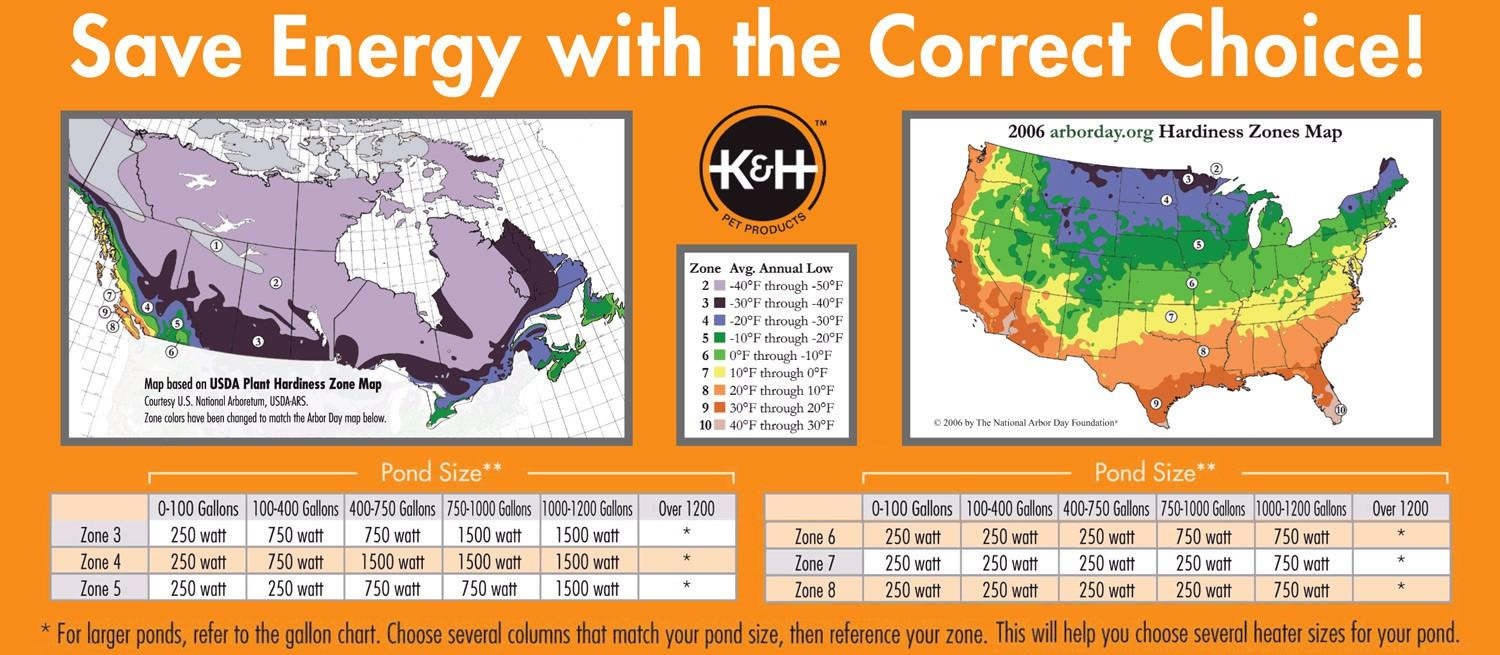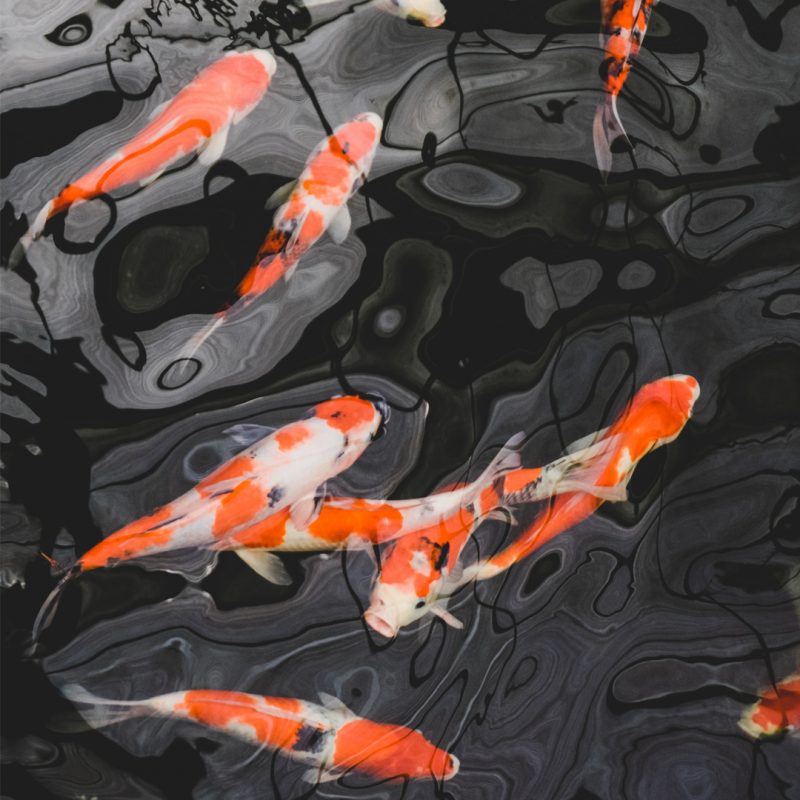With temperatures dropping, it’s time to start getting your pond ready for winter. Properly caring for your koi in the winter is essential to ensuring that they stay safe and healthy until temperatures begin to rise again in the spring. There are a few different ways you can winterize your pond and care for your koi in the colder months. Your climate, budget, and resources will help you determine which option is best for you and your pond.
Pond Cleaning
Regardless of how you choose to winterize, cleaning your pond is the first step. Clear out your skimmer and make sure your pond is free of leaves and debris. To prevent debris from building back up over the winter, consider installing a pond net. You’ll also want to trim back plants around your pond to prevent them from potentially falling into the water and negatively impacting the water quality. Tropical and subtropical plants should be brought inside once temperatures dip below 50°F.
Feeding
As water temperature decreases, the metabolism of your koi slows down. They’ll become less active and will need less food, so it’s important to adjust their feeding schedule accordingly. When temperatures start to drop, koi begin to enter a state of hibernation. Late fall is a good time to swap out your warm-weather food for a cold-water wheat germ that is easier for koi to digest. Pay attention to your pond thermometer as the seasons start to change. The water temperature will help you determine how often you should be feeding your koi:
|
Water Temperature |
Feeding Frequency |
|
60–68°F |
Once or twice a day |
|
50–60°F |
Once every other day |
|
50°F and below |
Stop feeding |
Even if your koi seem hungry, feeding them at temperatures below 50°F can do more harm than good. Because their metabolism slows in cold temperatures, they are unable to digest food. The food can then become stuck in the intestinal tract of your koi, which can be fatal.
Something to note: cold-weather feeding schedules tend to vary among koi keepers. When in doubt, pay attention to your koi. As temperatures cool, you’ll likely notice a change in their eating habits. Gradually reduce how much and how often you feed your koi as they begin eating less.
Winterization For Climates Above 50°F
If you live in a more mild climate, there’s very little you need to do to prepare your pond for winter. Simply continuing to follow the recommended cleaning schedule should be sufficient. If you live in an area that occasionally experiences sudden cold weather, make sure your pond plumbing is well insulated to prevent damage to your pumps and filter. This way, even in the event of a drastic drop in temperature, you can ensure that water is still circulating.
Warmer climates usually don’t experience extended periods of freezing temperatures. Koi won’t go into hibernation mode if the temperatures aren’t consistently low, which is why it’s extremely important to pay attention to your pond thermometer and adjust feedings accordingly. If you know an extended cold front is coming through, consider reducing feedings 48 hours before it arrives. This will ensure that they have time to digest any food that is already in their system. You can start feeding your koi again two or three times a week when temperatures stay above 50°F for several days.
Winterization For Climates Below 50 °F
For colder climates, there are a few different ways you can winterize your koi pond.
Keep Koi in Pond
Leaving your koi in the pond through the winter is the least taxing way to winterize. While the thought of leaving their fish out in the cold can make some koi owners apprehensive, koi are cold-blooded and can handle cooler temperatures.
If you live in a region that doesn’t experience freezing temperatures, you can keep your pump and filter running throughout the winter. However, in climates prone to frequent freezes, it’s best to remove the pump and filter from your pond once the water temperature is in the mid-40s. This prevents the mechanisms from freezing and potentially breaking. Put in an aerator once you remove the pump to help provide oxygen to the fish. In the event that your pond starts to freeze over, the aerator will also help keep a hole in the ice.
Depending on the severity of your winter temperatures, you may want to consider installing a pond de-icer in addition to your aerator. The de-icer will heat the surface of your pond and keep it from freezing over, which will help ensure that oxygen is circulating and prevent toxic gases from building up.
Make sure you know your pond’s gallon size and depth before purchasing an aerator or de-icer. If you find an aerator you’re interested in, the tech specs should give a recommended pond gallon size and depth range. This is the easiest way to determine if the system will work for your pond. For de-icers, the average low temperatures of your region also come into play. There are various aerator and de-icer models available, so do some research to find which option makes the most sense for you and your budget. The chart below can help you choose the best heater size for your pond.

Build A Pond Cover
If you live in an area with extreme winter temperatures and decide to keep your koi outside in the pond, installing a temporary pond cover or greenhouse can add an additional layer of protection from the elements. Though this option can be costly, it does have some great benefits. The cover traps heat and helps prevent the pond from freezing over. It can also help maintain water quality by preventing debris from entering your pond and getting trapped under ice. A strong cover can protect your pond from cold winds, snow, and even predators.
You can either purchase a cover or greenhouse kit or build your own. There are several tutorials online if you’re interested in building your own, like this one. If you do decide to take this route, it’s best to still add an aerator or deicer to your pond–just to be safe.
You can also heat your pond and greenhouse if you’d like. The benefit of doing this is that you can enjoy your pond and your koi can continue to grow year-round. The downside, of course, is that heating your pond cover or greenhouse can get a bit pricey. If you choose to take this route, you’ll need to care for your koi and your pond much like you would in warmer months. Remember to pay attention to the water temperature so you know when and what to feed your koi.
Bring Koi Inside
Even though it’s completely safe to leave your koi outside through the winter, it can make some koi owners nervous—especially because it’s difficult to monitor what’s happening below the ice. If you don’t feel comfortable leaving your koi out in freezing temperatures, there’s always the option to bring them inside. The simplest way to do this is to set up a poly tank or stock tank with a filtration system and aerator in your garage or basement. Make sure you cover the tank with a net to prevent koi from jumping. Pond Trade Magazine has some tips for overwintering your fish that will help you set up your indoor pond.
It’s best to bring your koi indoors before temperatures drop below 50°F, the point at which their metabolism begins to slow down. If you don’t have the space to relocate all of your koi, you can always pick a few of your favorites to bring indoors for the winter.
Your tank may still need a de-icer if it is in an unheated area like a garage. If your indoor setup is in a heated space, you’ll need to continue to feed your koi as you would in warmer months. If your koi continue to eat, they’ll also continue to grow and create potentially-toxic waste: keep this in mind when choosing the size of your indoor tank. You’ll also need to perform partial water changes every one to two weeks and regularly clean the filter and check water quality.
Though bringing your koi inside is the best way to ensure they are protected from the elements, it definitely isn’t the easiest process and requires a lot of time and resources. We’ve put together a list of factors to consider before deciding whether to bring your koi indoors this winter.
Bottom Line
No matter how you decide to care for your koi this winter, early preparation will make the transition a lot easier. Start getting ready now to ensure your pond and your koi stay healthy through this winter and beyond.

